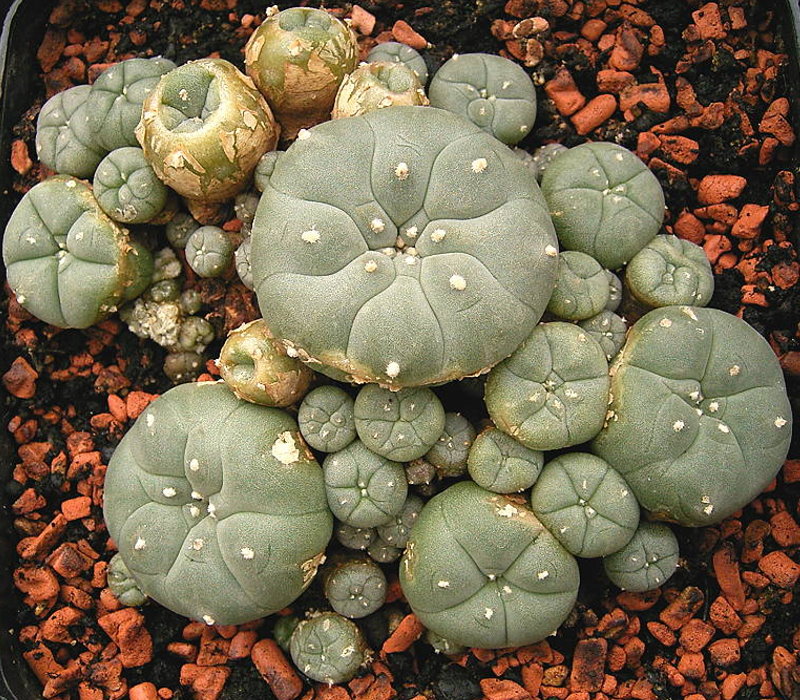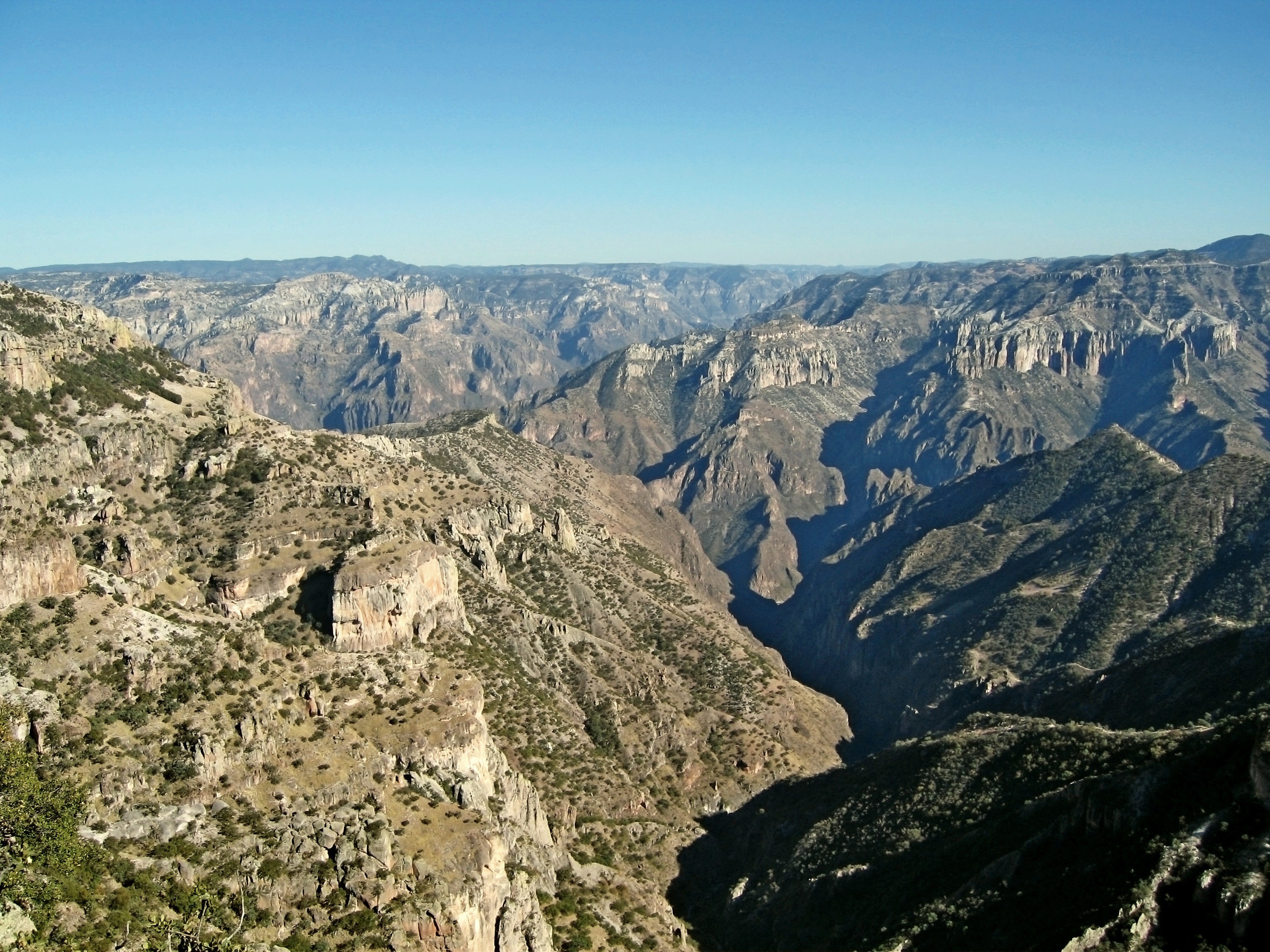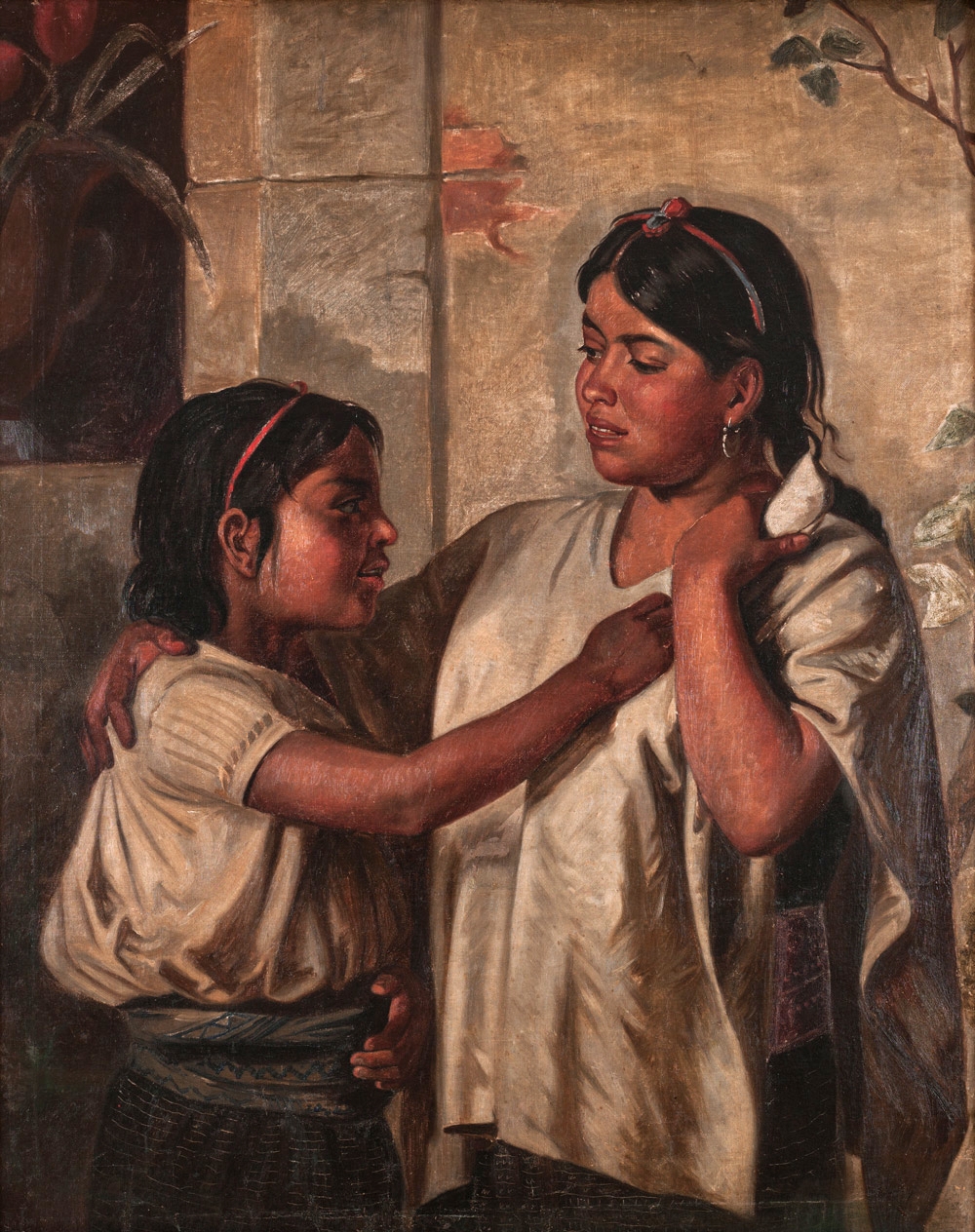|
Huichol
The Huichol () or Wixárika () are an Indigenous people of Mexico living in the Sierra Madre Occidental range in the states of Nayarit, Jalisco, Zacatecas, and Durango, with considerable communities in the United States, in the states of California, Arizona, New Mexico, and Texas. They are best known to the larger world as the ''Huichol'', although they refer to themselves as ''Wixáritari'' ("the people") in their Huichol language. The adjectival form of ''Wixáritari'' and name for their own language is ''Wixárika''. The Wixárika speak a language of the Wixarikan group that is closely related to the Nahuatl group. Furthermore, they have received Mesoamerican influences, which is reflected by the fact that Wixarika has features typical to the Mesoamerican language area. Their spirituality traditionally involves collecting and consuming peyote ('' Lophophora williamsii''), a cactus that possesses hallucinogenic effects due to its psychoactive alkaloids, such as mescaline. L ... [...More Info...] [...Related Items...] OR: [Wikipedia] [Google] [Baidu] |
Huichol Language
The Huichol language () is an indigenous language of Mexico which belongs to the Uto-Aztecan languages, Uto-Aztecan language family. It is spoken by the ethnic group widely known as the Huichol people, Huichol (self-designation ''Wixaritari''), whose mountainous territory extends over portions of the States of Mexico, Mexican states of Jalisco, San Luis Potosí, Nayarit, Zacatecas, and Durango, mostly in Jalisco. United States: La Habra, California; Houston, Texas. Under the 2003 Ley General de Derechos Lingüísticos de los Pueblos Indígenas, Law on Indigenous Language Rights, the indigenous languages of Mexico along with Spanish are recognized as "national languages". In regard to language typology, the language has switch-reference, is highly polysynthetic language, polysynthetic and verbs may consist of as many as 20 different morphemes. In recent years, at least two teaching grammars for Huichol have been produced in Mexico for nonnative speakers. In addition, a project t ... [...More Info...] [...Related Items...] OR: [Wikipedia] [Google] [Baidu] |
Jalisco
Jalisco, officially the Free and Sovereign State of Jalisco, is one of the 31 states which, along with Mexico City, comprise the 32 Political divisions of Mexico, Federal Entities of Mexico. It is located in western Mexico and is bordered by six states, Nayarit, Zacatecas, Aguascalientes, Guanajuato, Michoacán, and Colima. Jalisco is divided into Municipalities of Jalisco, 125 municipalities, and its capital and largest city is Guadalajara. Jalisco is one of the most economically and culturally important states in Mexico, owing to its natural resources as well as its long history and culture. Many of the characteristic traits of Mexican culture are originally from Jalisco, such as mariachi, tequila, ranchera, ranchera music, birria, jaripeo, etc., hence the state's motto: ('Jalisco is Mexico'). Economically, it is ranked third in the country, with industries centered in the Guadalajara metropolitan area, the third largest metropolitan area in Mexico. The state is home to two ... [...More Info...] [...Related Items...] OR: [Wikipedia] [Google] [Baidu] |
Spanish Language
Spanish () or Castilian () is a Romance languages, Romance language of the Indo-European languages, Indo-European language family that evolved from the Vulgar Latin spoken on the Iberian Peninsula of Europe. Today, it is a world language, global language with 483 million native speakers, mainly in the Americas and Spain, and about 558 million speakers total, including second-language speakers. Spanish is the official language of List of countries where Spanish is an official language, 20 countries, as well as one of the Official languages of the United Nations, six official languages of the United Nations. Spanish is the world's list of languages by number of native speakers, second-most spoken native language after Mandarin Chinese; the world's list of languages by total number of speakers, fourth-most spoken language overall after English language, English, Mandarin Chinese, and Hindustani language, Hindustani (Hindi-Urdu); and the world's most widely spoken Romance language ... [...More Info...] [...Related Items...] OR: [Wikipedia] [Google] [Baidu] |
Cactus
A cactus (: cacti, cactuses, or less commonly, cactus) is a member of the plant family Cactaceae (), a family of the order Caryophyllales comprising about 127 genera with some 1,750 known species. The word ''cactus'' derives, through Latin, from the Ancient Greek word (''káktos''), a name originally used by Theophrastus for a spiny plant whose identity is now not certain. Cacti occur in a wide range of shapes and sizes. They are native to the Americas, ranging from Patagonia in the south to parts of western Canada in the north, with the exception of ''Rhipsalis baccifera'', which is also found in Africa and Sri Lanka. Cacti are adapted to live in very dry environments, including the Atacama Desert, one of the driest places on Earth. Because of this, cacti show many adaptations to conserve water. For example, almost all cacti are succulents, meaning they have thickened, fleshy parts adapted to store water. Unlike many other succulents, the stem is the only part of most cacti ... [...More Info...] [...Related Items...] OR: [Wikipedia] [Google] [Baidu] |
Lophophora Williamsii
The peyote (; ''Lophophora williamsii'' ) is a small, spineless cactus which contains Psychoactive cactus, psychoactive alkaloids, particularly mescaline. is a Spanish word derived from the Nahuatl (), meaning "caterpillar Pupa#Cocoon, cocoon", from a root , "to glisten". p. 246. See wikt:peyotl, peyotl in Wiktionary. It is native to southern North America, primarily found in desert scrub and limestone-rich areas of northern Mexico and south Texas, particularly in the Chihuahuan Desert at elevations of 100–1500 meters. It flowers from March to May, and sometimes as late as September. Its flowers are pink or white, with thigmotactic anthers (like ''Opuntia''). It is a small, spineless cactus that grows in clusters, produces edible fruits, and contains psychoactive alkaloids—primarily mescaline—at concentrations of about 0.4% when fresh and up to 6% when dried. Peyote is a slow-growing cactus that can be cultivated more rapidly through techniques such as grafting, and whi ... [...More Info...] [...Related Items...] OR: [Wikipedia] [Google] [Baidu] |
Mesoamerican Language Area
The Mesoamerican language area is a ''sprachbund'' containing many of the languages natively spoken in the cultural area of Mesoamerica. This sprachbund is defined by an array of syntactic, lexical and phonological traits as well as a number of ethnolinguistic traits found in the languages of Mesoamerica, which belong to a number of language families, such as Uto-Aztecan, Mayan, Totonacan, Oto-Manguean and Mixe–Zoque languages as well as some language isolates and unclassified languages known to the region. History of Mesoamerican areal linguistics The similarities noted between many of the languages of Mesoamerica have led linguistic scholars to propose the constitution of a sprachbund, from as early as 1959. The proposal was not consolidated until 1986, however, when Lyle Campbell, Terrence Kaufman and Thomas Smith-Stark employed a rigid linguistic analysis to demonstrate that the similarities between a number of languages were indeed considerable, with the conclusion that ... [...More Info...] [...Related Items...] OR: [Wikipedia] [Google] [Baidu] |
Mesoamerica
Mesoamerica is a historical region and cultural area that begins in the southern part of North America and extends to the Pacific coast of Central America, thus comprising the lands of central and southern Mexico, all of Belize, Guatemala, El Salvador, and parts of Honduras, Nicaragua and northwestern part of Costa Rica. As a cultural area, Mesoamerica is defined by a mosaic of cultural traits developed and shared by its indigenous cultures. In the pre-Columbian era, many Indigenous peoples of the Americas, indigenous societies flourished in Mesoamerica for more than 3,000 years before the Spanish colonization of the Americas began on Hispaniola in 1493. In world history, Mesoamerica was the site of two historical transformations: (i) primary urban generation, and (ii) the formation of New World cultures from the mixtures of the indigenous Mesoamerican peoples with the European, African, and Asian peoples who were introduced by the Spanish colonization of the Americas. Mesoameri ... [...More Info...] [...Related Items...] OR: [Wikipedia] [Google] [Baidu] |
Nahuatl
Nahuatl ( ; ), Aztec, or Mexicano is a language or, by some definitions, a group of languages of the Uto-Aztecan language family. Varieties of Nahuatl are spoken by about Nahuas, most of whom live mainly in Central Mexico and have smaller populations Nahuatl language in the United States, in the United States. Nahuatl has been spoken in central Mexico since at least the seventh century CE. It was the language of the Mexica, who dominated what is now central Mexico during the Late Postclassic period of Mesoamerican chronology, Mesoamerican history. During the centuries preceding the Spanish conquest of the Aztec Empire, the Aztecs had expanded to incorporate a large part of central Mexico. Their influence caused the variety of Nahuatl spoken by the residents of Tenochtitlan to become a prestige language in Mesoamerica. Following the Spanish conquest, Spanish colonists and missionaries introduced the Latin script, and Nahuatl became a literary language. Many chronicles, gram ... [...More Info...] [...Related Items...] OR: [Wikipedia] [Google] [Baidu] |
Sierra Madre Occidental
The Sierra Madre Occidental is a major mountain range system of the North American Cordillera, that runs northwest–southeast through northwestern and western Mexico, and along the Gulf of California. The Sierra Madre is part of the American Cordillera, a chain of mountain ranges (cordillera) that consist of an almost continuous sequence that form the western "sounds" of North America, Central America, South America, and West Antarctica. Etymology The Spanish name ''sierra madre'' means "mother mountain range" in English, and ''occidental'' means "western", these thus being the "Western mother mountain range". To the east, from the Spanish ''oriental'' meaning "eastern" in English, the Sierra Madre Oriental range or "Eastern mother mountain range" runs generally parallel to the Sierra Madre Occidental along eastern Mexico and the Gulf of Mexico. The range extends from northern Sonora, a state near the Mexico–U.S. border at Arizona, southeast towards to the Trans-Mexican V ... [...More Info...] [...Related Items...] OR: [Wikipedia] [Google] [Baidu] |
Indigenous People Of Mexico
Indigenous peoples of Mexico (), Native Mexicans () or Mexican Native Americans (), are those who are part of communities that trace their roots back to populations and communities that existed in what is now Mexico before the arrival of Europeans. The number of Indigenous Mexicans is defined through the second article of the Mexican Constitution. The Mexican census does not classify individuals by race, using the cultural-ethnicity of Indigenous communities that preserve their Indigenous languages, traditions, beliefs, and cultures. As a result, the count of Indigenous peoples in Mexico does not include those of mixed Indigenous and European heritage who have not preserved their Indigenous cultural practices. Genetic studies have found that most Mexicans are of partial Indigenous heritage. According to the National Indigenous Institute (INI) and the National Institute of Indigenous Peoples (CDI), in 2012 the Indigenous population was approximately 15 million people, divided ... [...More Info...] [...Related Items...] OR: [Wikipedia] [Google] [Baidu] |
Uto-Aztecan Languages
The Uto-Aztecan languages are a family of native American languages, consisting of over thirty languages. Uto-Aztecan languages are found almost entirely in the Western United States and Mexico. The name of the language family reflects the common ancestry of the Ute language of Utah and the Nahuan languages (also known as Aztecan) of Mexico. The Uto-Aztecan language family is one of the largest linguistic families in the Americas in terms of number of speakers, number of languages, and geographic extension. The northernmost Uto-Aztecan language is Shoshoni, which is spoken as far north as Salmon, Idaho, while the southernmost is the Nawat language of El Salvador and Nicaragua. ''Ethnologue'' gives the total number of languages in the family as 61, and the total number of speakers as 1,900,412. Speakers of Nahuatl languages account for over 85% of these. The internal classification of the family often divides it into two branches: a northern branch including all the languages ... [...More Info...] [...Related Items...] OR: [Wikipedia] [Google] [Baidu] |
Hopi
The Hopi are Native Americans who primarily live in northeastern Arizona. The majority are enrolled in the Hopi Tribe of Arizona and live on the Hopi Reservation in northeastern Arizona; however, some Hopi people are enrolled in the Colorado River Indian Tribes of the Colorado River Indian Reservation at the border of Arizona and California. The 2010 U.S. census states that about 19,338 US citizens self-identify as being Hopi. The Hopi language belongs to the Uto-Aztecan language family. The primary meaning of the word ''Hopi'' is "behaving one, one who is mannered, civilized, peaceable, polite, who adheres to the Hopi Way." Some sources contrast this to other warring tribes that subsist on plunder.Connelly, John C., "Hopi Social Organization." In Alfonso Ortiz, vol. ed., ''Southwest'', vol. 9, in William C. Sturtevant, ed., ''Handbook of North American Indians'', Washington, D.C.: Smithsonian Institution, 1979: 539–53, p. 551 ''Hopi'' is a concept deeply rooted in the c ... [...More Info...] [...Related Items...] OR: [Wikipedia] [Google] [Baidu] |






